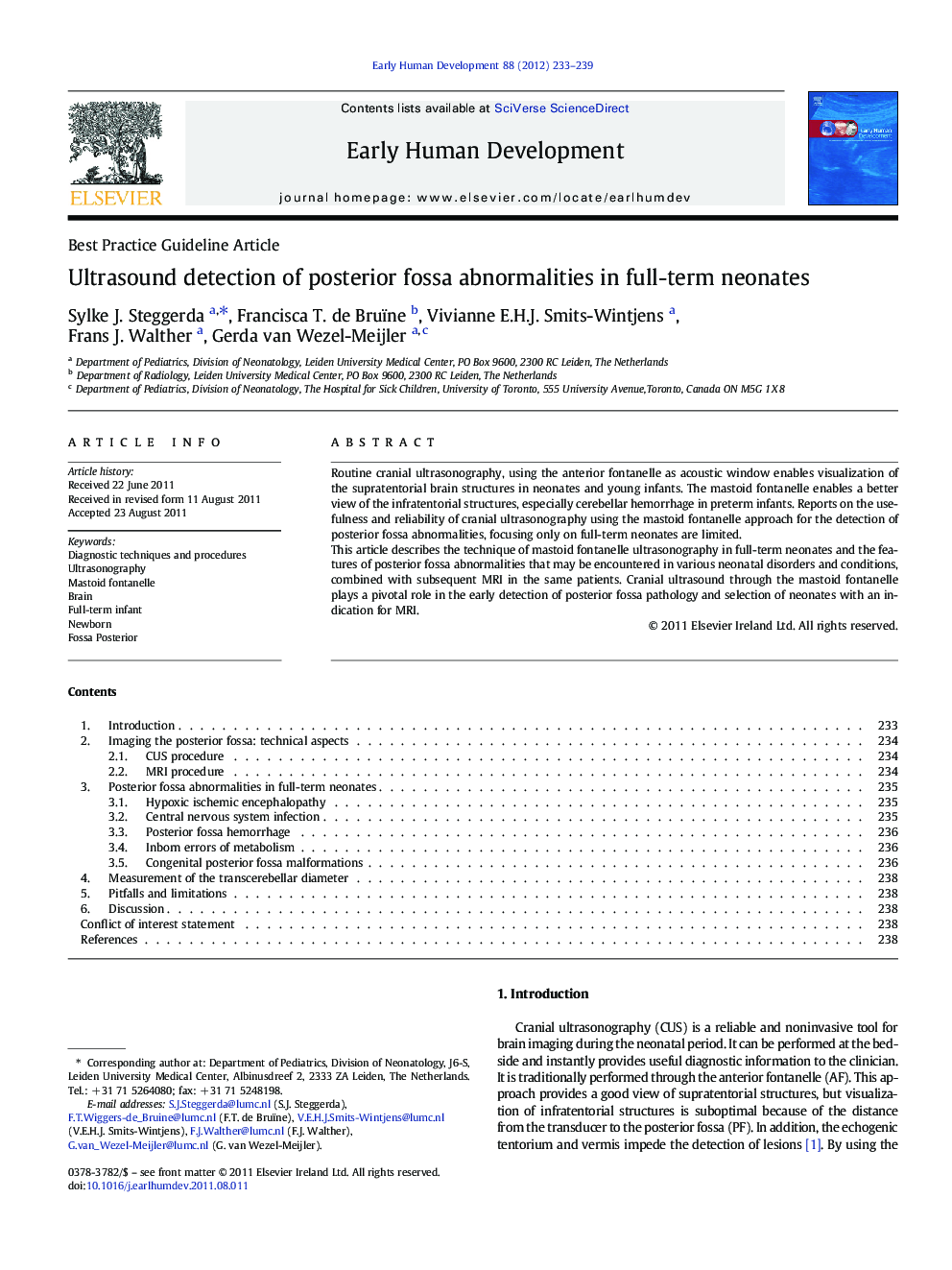| Article ID | Journal | Published Year | Pages | File Type |
|---|---|---|---|---|
| 3918389 | Early Human Development | 2012 | 7 Pages |
Routine cranial ultrasonography, using the anterior fontanelle as acoustic window enables visualization of the supratentorial brain structures in neonates and young infants. The mastoid fontanelle enables a better view of the infratentorial structures, especially cerebellar hemorrhage in preterm infants. Reports on the usefulness and reliability of cranial ultrasonography using the mastoid fontanelle approach for the detection of posterior fossa abnormalities, focusing only on full-term neonates are limited.This article describes the technique of mastoid fontanelle ultrasonography in full-term neonates and the features of posterior fossa abnormalities that may be encountered in various neonatal disorders and conditions, combined with subsequent MRI in the same patients. Cranial ultrasound through the mastoid fontanelle plays a pivotal role in the early detection of posterior fossa pathology and selection of neonates with an indication for MRI.
